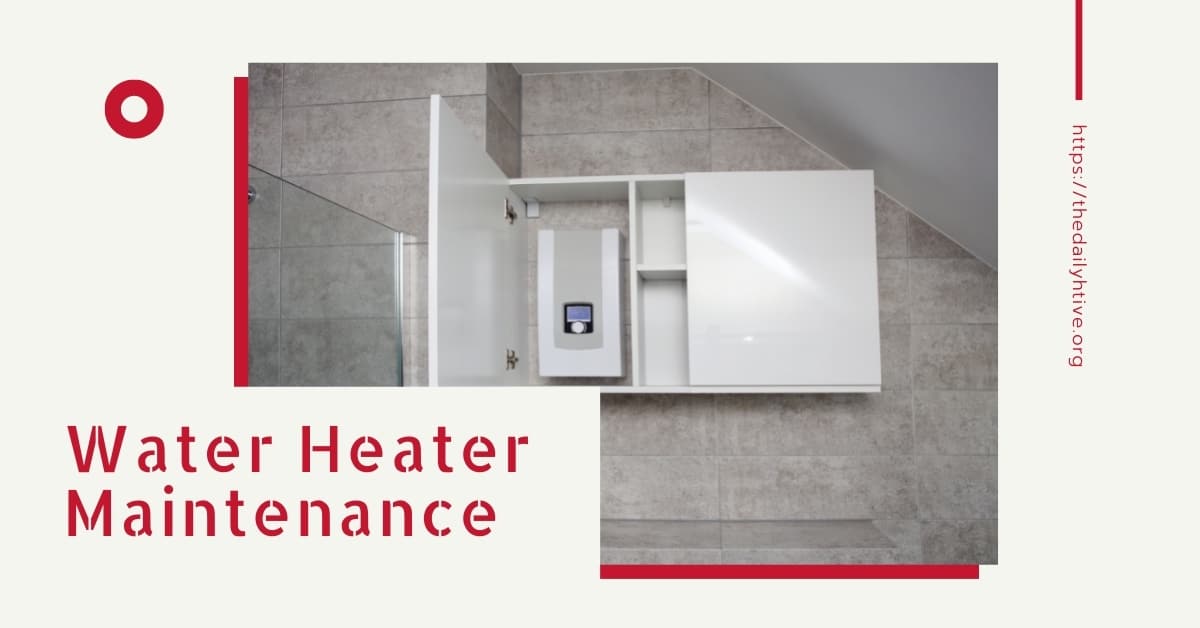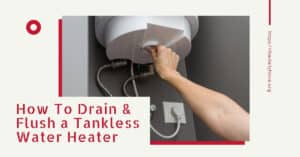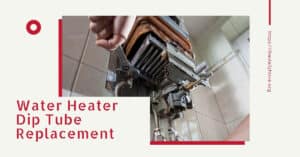A water heater is generally a reliable household appliance that requires little regular maintenance. It is recommended that you perform routine maintenance and inspections at least every 6 to 12 months. Water heater maintenance can prevent leaks, maintain optimal energy efficiency, and prolong the life of your water heater.
In this article, you will find our best maintenance tips for electric, gas, and tankless water heaters, which should help you avoid more expensive repair costs.
Safety Procedure Before Performing Water Heater Maintenance
When performing water heater maintenance, you must follow some important safety procedures before doing repair work.
Tankless Water Heater Maintenance
If you have a tankless water heater, make sure that you shut off the gas, water, and power supply to the water heater before you do any action.
If there’s a power switch to the water heater, turn the switch to the off position. If not, turn the power off at the circuit breaker as a safety precaution. This action will probably turn off all electrical devices in the home.
Next, to stop cold water flowing into the heater and hot water flowing out of the heater, you will need to turn the water valves into the OFF position.
The cold water valve may be coloured blue, and the hot water valve coloured red. You can also usually determine the two by touching them. Be careful as the hot water outlet pipe can get very hot, particularly during use.
Finally, turn OFF the gas supply by setting the nozzle perpendicular (at a right angle) to the pipe.
Electric Water Heater Maintenance
With an electric water heater, before you perform any DIY water heater maintenance, confirm that the power supply to the tank is turned OFF. Also, the water inlet valve that allows water to flow into the tank must be turned off.
To confirm that you turn OFF the correct water shutoff valve for water coming into the tank, lightly touch the pipe leading into the top of the tank. The correct pipe will be cold as the inlet water pipe supplies cold water, while the outlet pipe supplies hot water to your home.
Turn the inlet shutoff water valve so the handle sits perpendicular to the pipe. Be careful when touching any pipework, as the hot water outlet pipe can get very hot and cause a scalding injury.
To shut OFF the power supply to your electric water heater, simply locate your circuit breaker and turn it to the OFF position.
Gas Water Heater Maintenance
Before you do any gas water heater repair or maintenance work, make sure that the tank’s power supply, water supply, and gas supply are turned OFF.
To turn OFF the water supply to your gas water heater, simply follow the same instructions outlined above for an electric water heater.
To turn off the power supply, locate the ON/OFF switch or dial on the side of the tank and turn it to the OFF position. Alternatively, simply turn OFF the power at the circuit breaker.
Follow the gas supply line feeding into the water tank to shut OFF the gas supply. The gas supply line may run along the side of the tank or the back of the tank. You should be able to locate the gas shutoff valve along the gas supply line, which leads into the water tank. Turn the lever until it sits perpendicular to close the gas supply line.
Water Heater Maintenance Checklist
Once you’ve completed the above pre-maintenance procedure, it should be safe to perform water heater maintenance.
Visually Inspect Your Water Heater
Leaking water from your water heater, even the smallest of leaks, can cause a lot more damage.
As part of your periodic water heater maintenance checklist, visually inspect for water leaks around the tank. Suppose you have a tank-type water heater, along with all the plumbing joints that lead into and out of your water heater and the floor area around the tank. In that case, this is also a sign of water leakage.
If you find evidence of corrosion, this indicates a leak problem that should be addressed to avoid larger water heater problems. Excessive corrosion at valve points is best dealt with by replacing corroded parts.
Also, check the condition of the flex hoses and replace these if necessary.
Check the Temperature & Pressure Relief Valve
If you have a tank-based water heater, you should also systematically test the Temperature & Pressure Relief Valve (TPR).
Take care when testing the TPR as the water released from the valve can be extremely hot.
The TPR plays an important role in water heaters. It ensures that any pressure buildup from heating water is released safely. A correctly functioning TPR should open and close freely, and there should be no water leaking from the valve after it’s closed.
Check the Heater Element on Electric Water Heaters
Suppose your electric water heater takes a long time to heat up or runs out of hot water too quickly. In that case, the heater elements may be caked in limescale and need cleaning, or they need replacing entirely.
Listen to your water heater. Suppose you hear noise or your water heater gets progressively louder. In that case, this may indicate that the heater elements need cleaning or replacing.
Periodically Flush Your Water Heater
Whether you have an electric, gas, or on-demand water heater, it is good practice to periodically maintain your water heater by annually flushing it to clean out any buildup of sediments and limescale sediments.
Flushing a water heater every 6 months, depending on the hardness of the local water, will help prolong its life and maintain optimum efficiency.
Always check your water heater owner’s manual to see what the manufacturer recommends. We hope that this water heater maintenance will keep the hot water flowing and extends the lifespan of your water heater.






